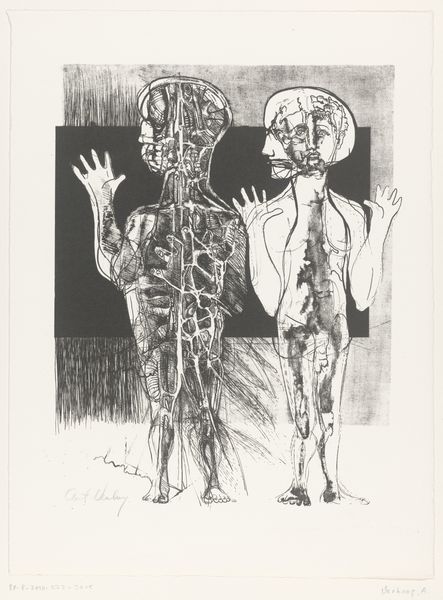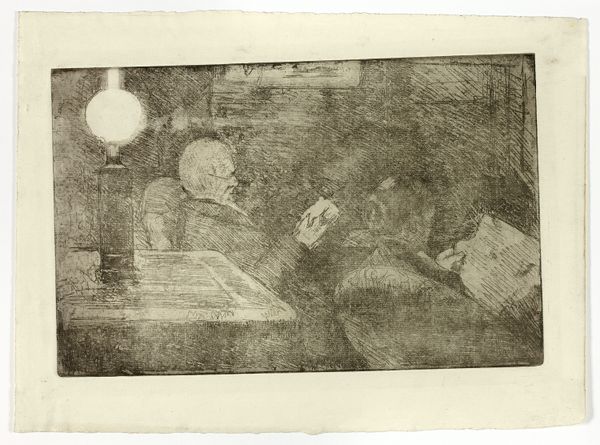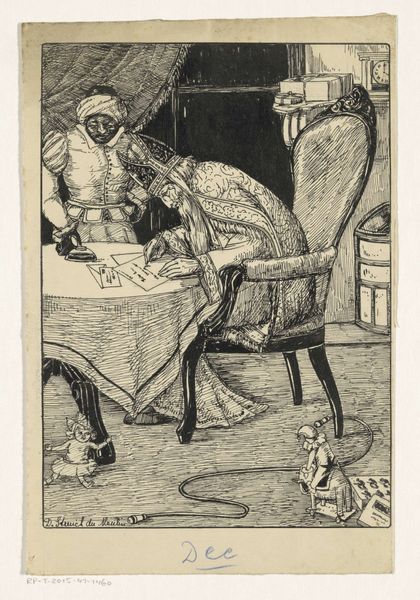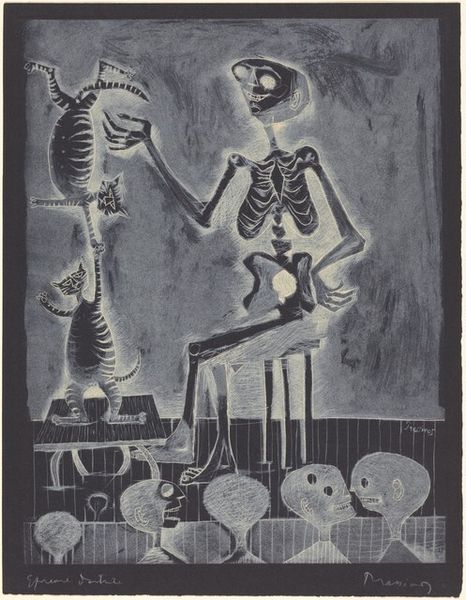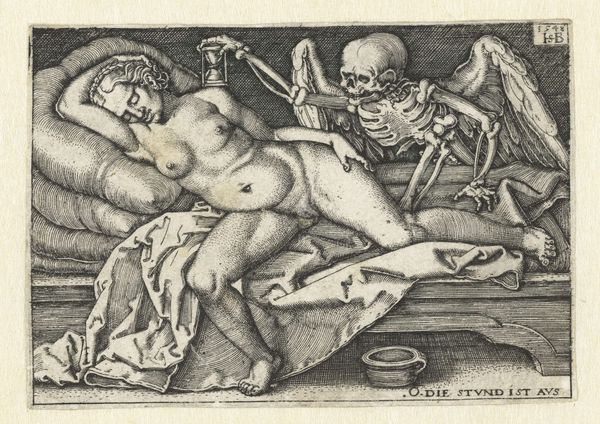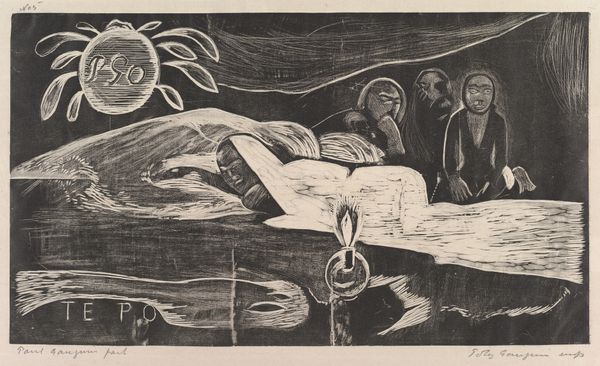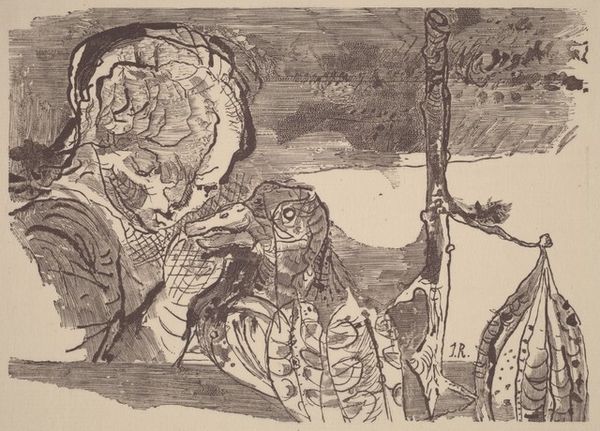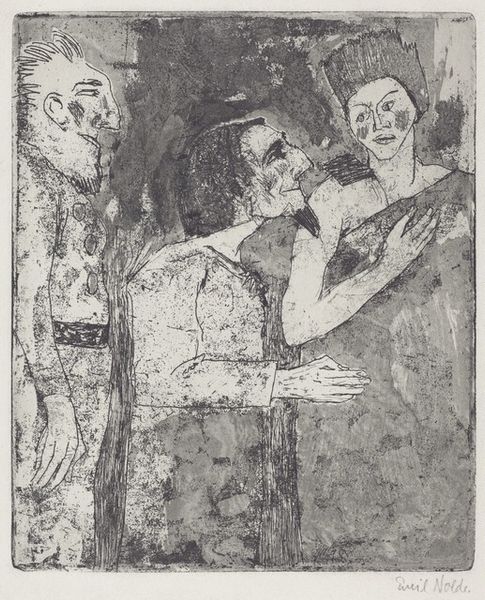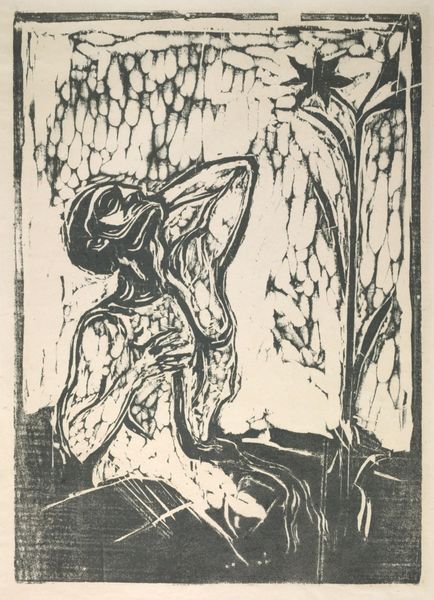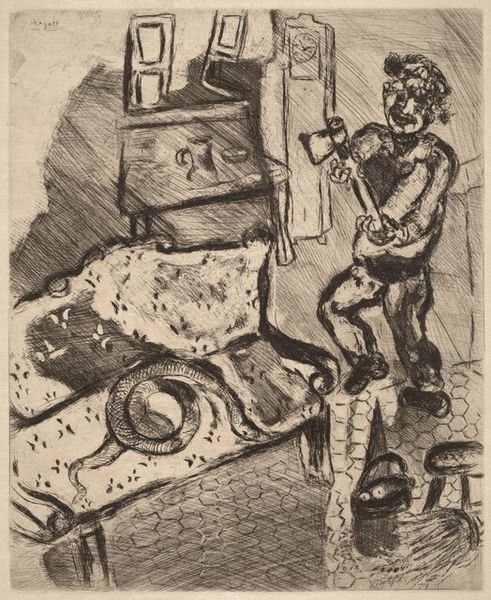
print, etching, intaglio
narrative-art
etching
intaglio
figuration
momento-mori
expressionism
Curator: This somber image is Emil Nolde's "Sick Man, Doctor, Death, and Devil," an intaglio print created in 1911. Editor: My initial reaction is…claustrophobic. The stark black and white intensifies the morbidity; the etching technique seems to emphasize every grim detail. It really screams of anxiety. Curator: Nolde often explored themes of mortality and human suffering through distorted figuration and evocative symbolism. Notice how the doctor and the sick man seem trapped at the table with Death personified as a skeleton. Even a devil looms in the background. This grouping speaks to the power of this image as a memento mori, reminding viewers of the inevitability of death and, thus, how we choose to live. Editor: Absolutely. I am struck by the isolation conveyed here. The scene screams late-stage capitalism, in which even the supposedly comforting presence of a doctor feels indifferent. It seems Nolde is gesturing towards institutionalised greed where the ill can also become capital. Note also, Nolde’s well documented anti-semitism adds a sinister undercurrent if we think of these actors as stereotypes during the Expressionist movement. Curator: The print certainly captures a sense of desperation and helplessness. Nolde uses these archetypal figures to express anxieties about modern existence. While this depiction carries connotations within his documented biases, they also present more universal fears about healthcare, about care and illness. The bottle on the table indicates reliance on dubious remedies and how humans grapple with existential crises. Editor: That's a strong point. Looking at this print today, beyond the historical specifics, I see the piece commenting on broader injustices when we’re grappling with vulnerability: race, gender, ability… Illness, in the hands of the elite, renders all bodies vulnerable to neglect and cruelty. Curator: Indeed, while created over a century ago, its emotional power resonates even now. The symbolism allows us to reflect on our own fragility, even though it can be tough to consider it. Editor: I agree; Nolde provides an invitation to confront systemic inequities and the ephemerality of life. It forces us to question the narratives that normalize apathy, asking for radical forms of change instead. Curator: An uneasy reminder of life’s transient nature, and the need to challenge harmful norms, captured with the raw intensity of Expressionist printmaking. Editor: Exactly. The raw emotion and powerful message embedded within Nolde’s etching linger long after viewing, serving as a critical challenge.
Comments
No comments
Be the first to comment and join the conversation on the ultimate creative platform.

